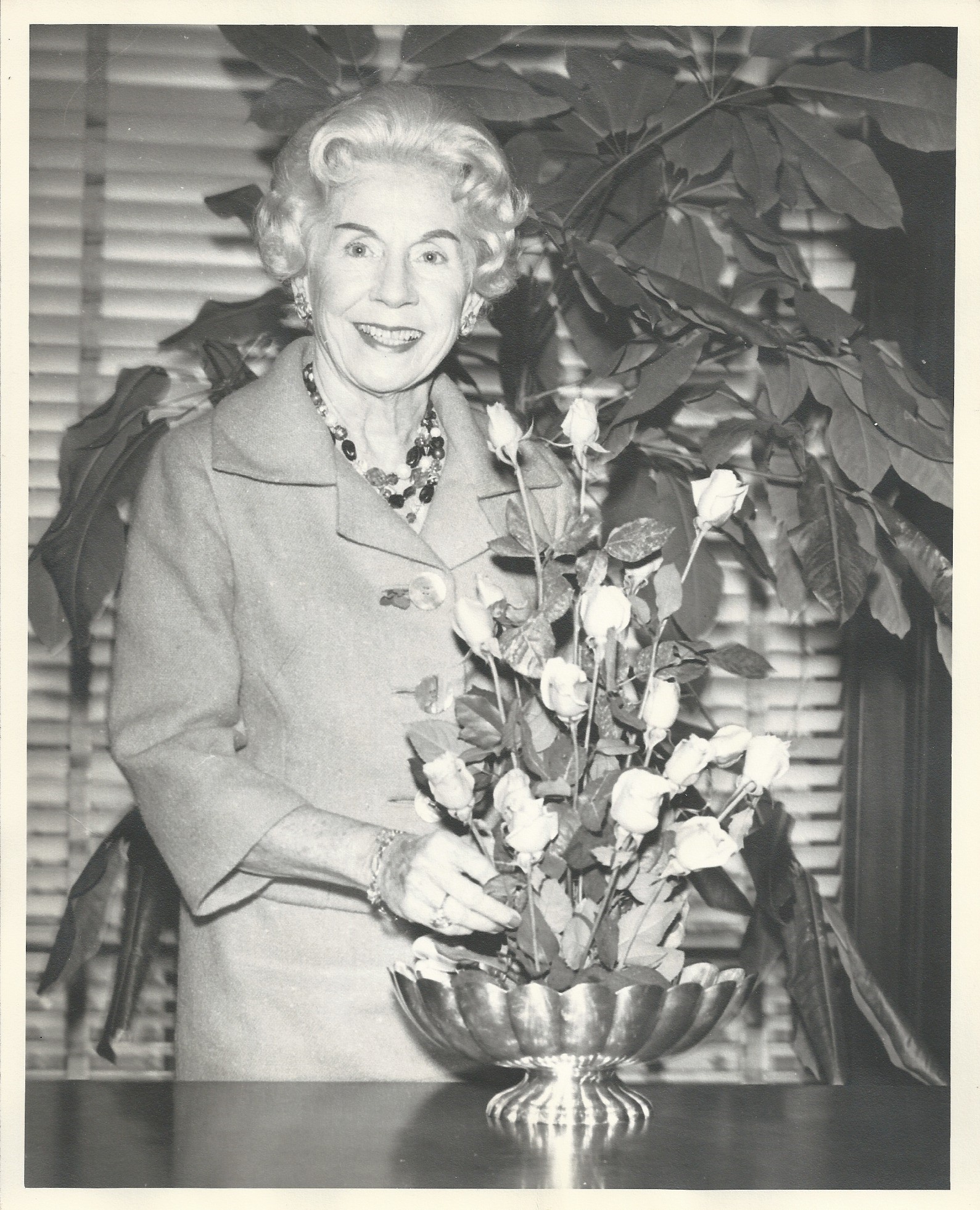Don,
I found two more newspaper articles, but they have the usual weakness: they are newspaper articles. I had a similar problem when I was researching Schoener. It became apparent that the “reporters” dropped by his place, jotted down some notes, then went back to the office to smush (no other word for it) the notes into a “human interest” story. A lot of chaff with the occasional kernel of information. The trick it to separate one from the other.
Independent Press-Telegram, Long Beach, CA. p. 100 (Sunday, August 12, 1956
There’s Silver on the Bush
Matt Bassity
A hybrid tea rose, for which a $5000 solid silver bowl was specially created, has been shown to the public for the first time by its introducers, the Jackson Perkins Co., during the 25th annual Rose Festival al Newark, N. Y.
Named Sterling Silver, the new rose was developed by Gladys Fisher of Woburn, Mass., one of the few women rose hybridizers in the world. It is the result of a cross between the well known hybrid tea rose, Peace, and a grey blue-lavender rose called Morning Mist.
OTHER THAN its color, which is a pure lavender with a silver sheen, the most outstanding characteristic of Sterling Silver is the pronounced fragrance, which its originators say can be best described as the scent of attar-of-roses.
Good for use in arrangements because of its long, strong stems, this new variety also is remarkable for its absence of thorns. A further asset is its handsome glossy leaves.
The silvery sheen of the tight buds and the luminescent quality of the full-blown rose make it particularly desirable for displays in silver containers, rose authorities say.
The Circleville Herald (Circleville, Ohio) p. 5 (26 Aug 1959)
Mrs. Fisher Top Rose Hybridizer
There are only two or three top flight women rose hybridizers in the whole world. Mrs. Gordon Fisher of Woburn, Mass., is one.
She developed one of the first true lavender roses, “Sterling Silver”.
And because “Sterling Silver” has a bluish cast in its silver petals it is in the realm of possibility that this interesting, long-stemmed, fragrant lavender rose may be an ancestor to the first blue roses to come out of America.
Anyway Gladys Fisher is hoping for a blue rose. And each morning when she views flats of tiny seedlings she casts a quick glance over the whole lot for a blue rose.
Seedling roses bloom when only two or three inches high. And from these seedlings rosarians work to develop length of stem and texture or petals. The color of the rose seedling never changes.
MRS. FISHER is described as a vivacious, attractive little person, forever sought after as speaker at rose festivals and garden clubs. Both she and her husband, the late Gordon Fisher, were graduates of the University of New Hampshire. They were married in 1916. And for some 27 odd years Mrs. Fisher stuck to her “knitting” which happened to be the business of making a home and rearing the two Fisher children.
Just one week after her husband’s death in 1943 the head rose hybridist at the Arnold-Fisher company, the wholesale florist organization which her husband had owned, left to enter the service.
And Mrs. Fisher decided to try her hand at the job. Timidly at first! During the first year she made only between 50 and 100 crosses.
She worked for five years before she developed her first patented rose, “Pandora,” a creamy apricot with a heart of deeper apricot. Others are “Love Song”, “Tapestry” and “Capri”.
In 1946 Mrs. Fisher’s first lavender, “Morning Mist” was developed. From “Morning Mist” a stronger rose, “Sterling Silver” was created.
Mrs. Fisher frankly admits that patience is one of the characteristics a rose hybridist needs. It is a tedious and exacting job. It also requires a formidable knowledge of the principles of heredity.
First Mrs. Fisher says she chooses a rose of good stock. A rose bud is selected, opened and the pollen popped into an envelope and carefully labeled.
In a few days when she is ready to make the cross she selects that parent rose, removes the petals, stamens and pollen. Then she rubs the pistil of this rose in the pollen from the envelope. When the pistil is throughly covered she ties a glassine bag over the cross to prevent further pollenization.
THE ROSE is tagged with complete information.
Later when Mrs. Fisher inspects it, if the seed pod is green she knows the cross has taken. When the rose hip is the size of a walnut and orange in color the seeds are removed and planted in flats.
It takes some three months before the seedlings are an inch high. Even at this early date the selectivity starts.
Roses are self pollenizing so the hybridizer dares not wait for the rose to open but must make her cross while it is still in bud.
Mrs. Fisher may have started her work timidly but now her seedlings number up to 10,000 a year. So maybe she will reach her goal. Maybe she will be the one to develop the first American blue rose.
We say “American Blue Rose” because blue roses have been developed both in Japan and Germany.
It is interesting to note that Mrs. Paul Wood of Stoutsville during her stay inJapan in 1955 saw blue roses which had been grown in the Japanese Emperor’s garden. And they were a true blue she says. She also saw brown and black roses in Japan.
Mrs. Fisher has another goal beside a blue rose. She’s striving for a more perfect red rose. It will be a sort of memorial to her late husband whose favorite flower was the red rose.
